Paraphernalia for the Regency Man
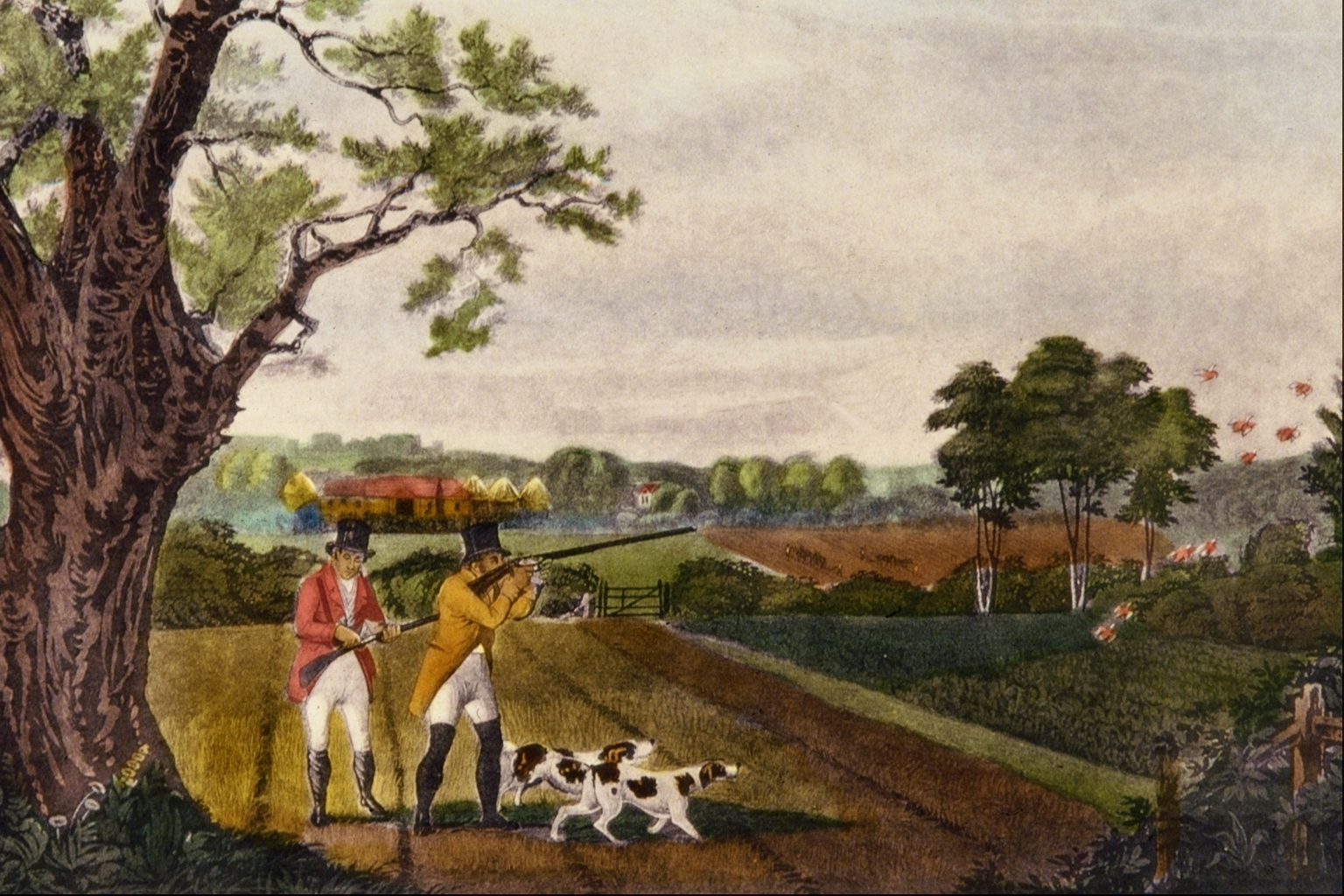
Going beyond hat and gloves for the serious reenactor
by Brian Cushing, First Published for the May/June 2014 issue of Finery
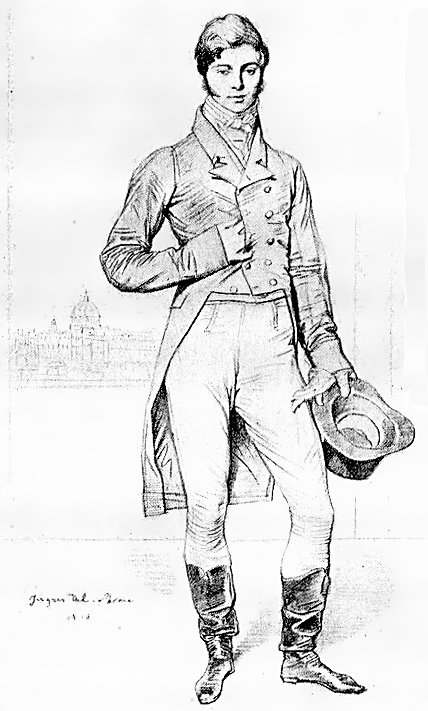
Portrait of Lord Grantham by Ingres, 1816
While modern eyes view the Regency man as elegant and refined, contemporary conservative eyes looking on him would have perceived him as anything but. The wardrobe of some dandies like Beau Brummel were plain and rooted in those requiring something more utilitarian and less ornamental than the dress of the previous generation (Figure 1). By the end of the 18th century, the most apparent of these changes in men’s wear was the replacement of breeches for trousers.
Previously, trousers had been relegated to physical labor. During the Regency they were stylized and became a trend for the upper classes. Boots, formerly reserved for work or riding, succeeded the buckled shoes and stockings for dress. The coat was a drab, plain wool, contrasting starkly with the opulence projected by the fabric of Georgian dress.
Three main factors may have contributed to this radical departure from the styles of the previous generation. One, pointed out by Norah Waugh in her classic work, The Cut of Men’s Clothes: 1600-1900, was that, “the English nobility spent a great part of the year on their country estates or visiting other country estates; always interested in sport . . .” (p. 53). The desirability of country and sporting activities transformed Regency men’s fashion. An external factor may have been the French Revolution, where displays of opulence could literally be deadly. And finally, there is the tendency of one generation to use fashion as a tool of rebelling against the previous generation. Regency fashion was a departure and contrast to what the Georgian’s considered “appropriate” dress.
During the Regency, men were concerned with being manly. If we look to accessories beyond the hat and gloves, we need to include those items that convey the impression of the country gentleman. Sporting was certainly on the minds of these men, and none so prevalent as the rural sport of the hunt (Figure 2). An obvious choice for accessories when recreating the Regency country gentleman are period correct firearms and their accoutrements.
As the Regency Era preceded the percussion (“cap and ball”) system, a flintlock fowler (Figure 3) for sporting or a pistol for ready defense are typical of this era. There are many special tools associated with the maintenance and use of flintlock arms which provide both additional “accessories” and a ready demonstration if you are in a position to interact with the public. Just be sure your hunting bag is worthy of an English gentleman and not suited only to the American frontier. His best work does not appear on the website, but Greg Hudson always has outstanding hunting and game bags in stock and he does custom work. (http://www.revwarsupplier.com/)

For the gambling man, a Regency gent need not resort to modern equivalents. Figure 4 depicts the gear I keep with me.
Correct playing cards can be obtained from Jas Townsend and Son (http://www.jas-townsend.com/). The fish tiles, similar to those used as gambling tokens at the time, are available from Taylor Rose Historical Outfitters (http://www.taylor-rosehistorical.com/). The replica coins were a generous gift from a friend.

When recreating a gentleman of the past, any portion of the material culture that was a part of his day-to-day life is a potential accessory for your portrayal. One activity that was very present in Regency men’s lives was writing: without telephones or email, all correspondence was written and mailed. The articles for writing shown in Figure 5 provide accessories, the process provides a demonstration, and, if you can find a Regency “pen pal” or two, your correspondence will become further items that you can utilize when recreating the Regency era.
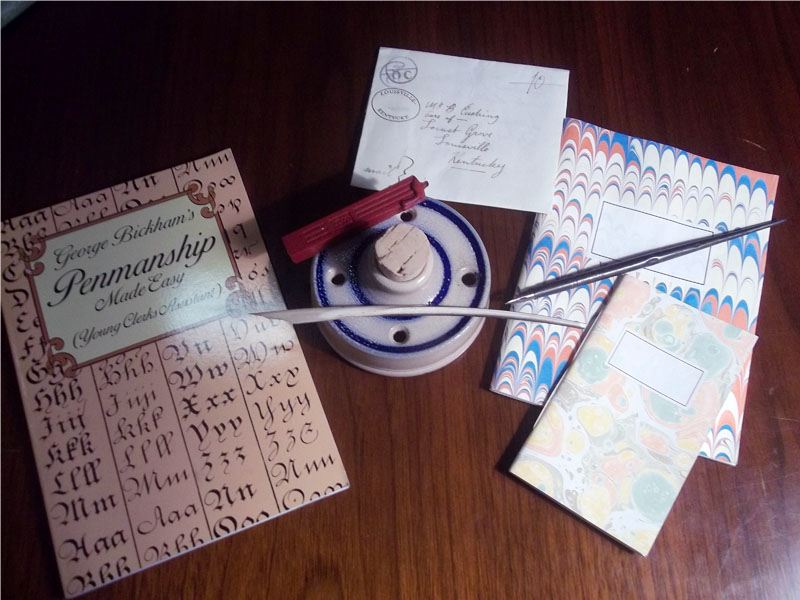
George Bickham’s Penmanship Made Easy is invaluable in familiarizing with variances in writing style at the time. The stoneware ink well was made by historic potter Jay Henderson (http://artifacts.brigandsfolie.com/). My quill was cured and cut by a friend, and is the necessary tool for writing. A stick of sealing wax is commonly available from wedding suppliers and stationers. The antique stylus, and some inexpensive marble covered journals/notebooks are from Regency Revisited (http://www.regencyrevisited.com/). The letter shown below in Figure 6 was sent to me by Albert “The Doctor” Roberts ,(http://regencydoctor.blogspot.com/p/aboutme.html) who introduced me to recreating period correspondence.
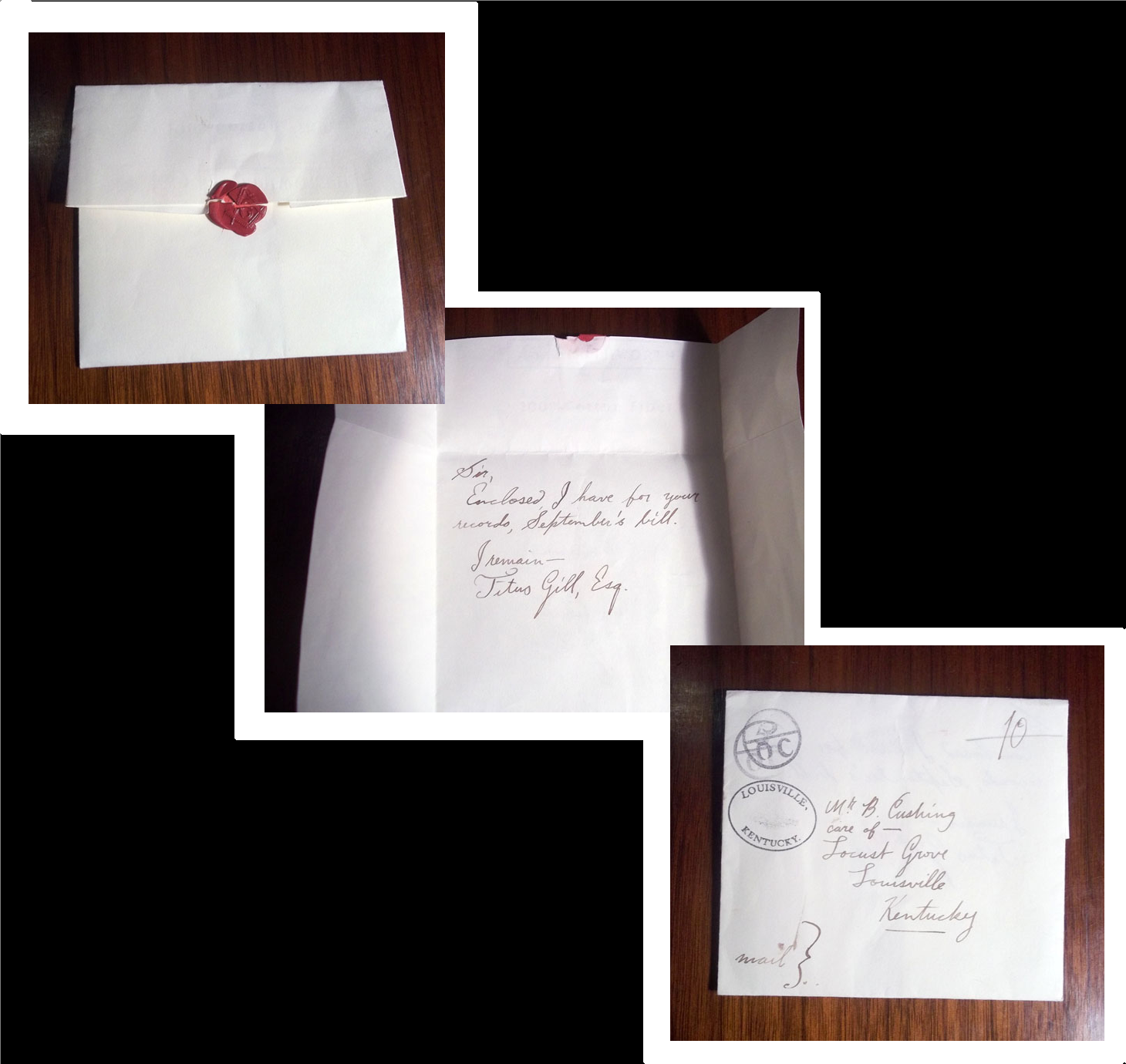
Reading was another popular pass time. It is still possible to find books from the early 19th century that are in good enough shape to carry around if the event you are attending is not strenuous. Sometimes, reproduced books are available. One of mine seen in Figure 7 is holding up well for a publication date of 1848. Also available are reproduced periodicals. Figure 8 shows examples of 1811 newspapers from Taylor Rose Historical Outfitters (http://www.taylor-rosehistorical.com/).


And, of course, the necessary function of day to day life can offer opportunities to incorporate items to make your impression more authentic. Large (to the modern eye) mechanical pocket watches were used to tell time. They were suspended from fobs that hung on the outside of the trousers, the inspiration for which can be found in some period portraits. Chances are, you will be taking a drink before the end of the day, and whether it is in the form of port, the preferred tipple of the Prince Regent or simply something to keep yourself hydrated, storing the liquid in one of the varieties of reproduced, hand blown bottles, as shown in figure 9, will aid your impression.

It is often the commonest articles of everyday life from the past that will make you feel and appear to be connected to the period you are portraying. There are many wonderful items that are reproduced and ready for your purchase, but do not be afraid to jump into learning to recreate items from the Regency era yourself. The common walking stick can be carved or built. While often forgotten by today’s society, the crafts of the past are often still alive in living history niches, and often by enthusiastic artisans ready to talk and lend advice to beginning reenactors. One way or the other, the key to accessorizing for the past is in the lives and habits of those who lived it.

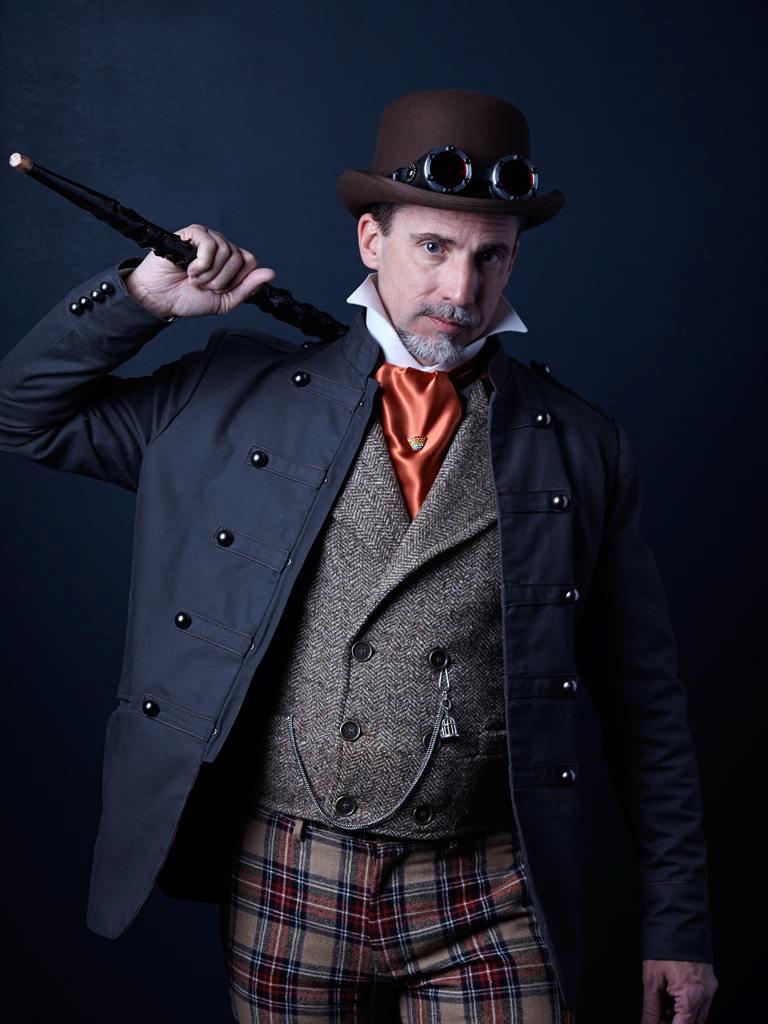
Jwlhyfer de Winter (a.k.a. Other Archer)
It’s so wonderful to see the creativity and thoroughness of this article. One of the things I love the most about costuming is the ability to become a character; and these sorts of accessories are extremely helpful in getting one in the right frame of mind to step back in time. Considering who this person is enables you to decide what they might be carrying around with them; what they would care about, talk about, think about; and if you are trying to portray this person at a Living History or similar event; you can bring the guests into the world you have created within your person. This, to me, is one of the magical things about Historical Costuming/Period Clothing for events; and something I have always appreciated and strive for.